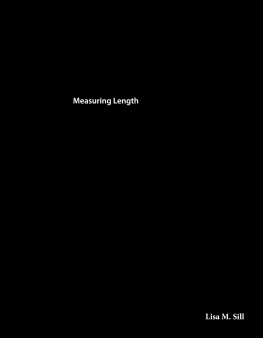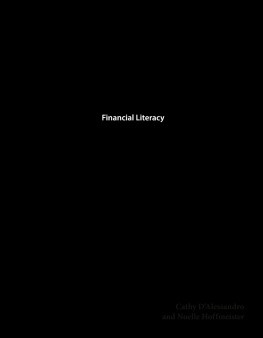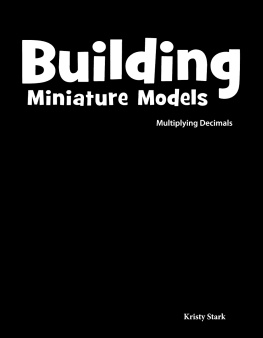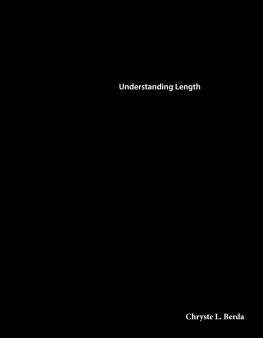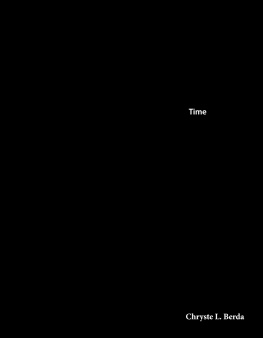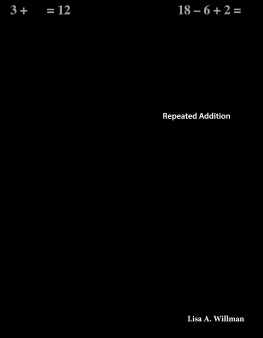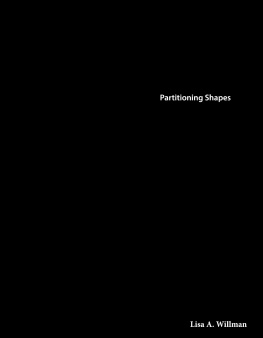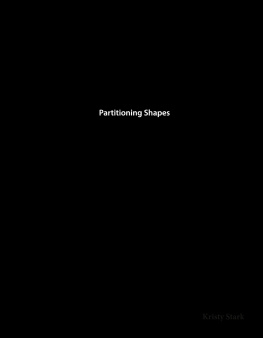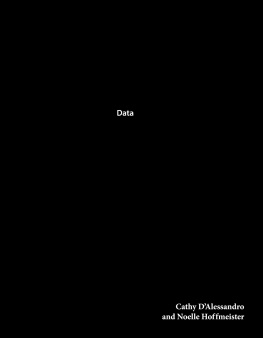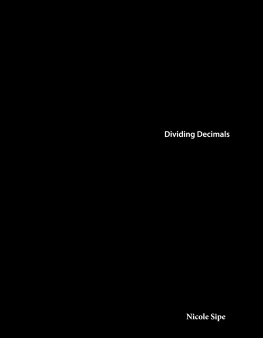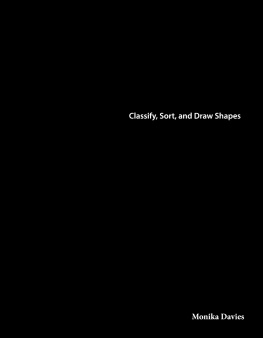Lisa M. Sill - Stem: Lasers: Measuring Length
Here you can read online Lisa M. Sill - Stem: Lasers: Measuring Length full text of the book (entire story) in english for free. Download pdf and epub, get meaning, cover and reviews about this ebook. year: 2018, publisher: Triangle Interactive, LLC, genre: Children. Description of the work, (preface) as well as reviews are available. Best literature library LitArk.com created for fans of good reading and offers a wide selection of genres:
Romance novel
Science fiction
Adventure
Detective
Science
History
Home and family
Prose
Art
Politics
Computer
Non-fiction
Religion
Business
Children
Humor
Choose a favorite category and find really read worthwhile books. Enjoy immersion in the world of imagination, feel the emotions of the characters or learn something new for yourself, make an fascinating discovery.
- Book:Stem: Lasers: Measuring Length
- Author:
- Publisher:Triangle Interactive, LLC
- Genre:
- Year:2018
- Rating:4 / 5
- Favourites:Add to favourites
- Your mark:
- 80
- 1
- 2
- 3
- 4
- 5
Stem: Lasers: Measuring Length: summary, description and annotation
We offer to read an annotation, description, summary or preface (depends on what the author of the book "Stem: Lasers: Measuring Length" wrote himself). If you haven't found the necessary information about the book — write in the comments, we will try to find it.
Stem: Lasers: Measuring Length — read online for free the complete book (whole text) full work
Below is the text of the book, divided by pages. System saving the place of the last page read, allows you to conveniently read the book "Stem: Lasers: Measuring Length" online for free, without having to search again every time where you left off. Put a bookmark, and you can go to the page where you finished reading at any time.
Font size:
Interval:
Bookmark:
0covercover.xhtmlcover1page0001page0001.xhtml22page0002page0002.xhtmlSTEM Lasers Measuring Length33page0003page0003.xhtml44page0004page0004.xhtmlTable of Contents What Are Lasers? 4 Bright Lights 6 White Light vs Laser Light 10 All Around Us 14 Lasers of the Future 26 Problem Solving 28 Glossary 30 Index 31 Answer Key 3255page0005page0005.xhtmlWhat Are Lasers? A laser is a device that makes a beam of light. It is a special form of light. It is not like sunlight. It is not like a flashlight, either. A laser is much more amazing! The light from lasers can be used in many special ways. Lasers help people every day. A scientist shines a laser up to the sky.66page0006page0006.xhtmlA scientist uses a laser in a lab.77page0007page0007.xhtmlBright Lights Lasers make very bright lights. In fact, they are the brightest source of light on Earth. The light from a laser can be up to one million times brighter than the light from a light bulb! This strong light can hurt people's eyes. But there are ways people can stay safe. The best way is to wear special glasses that block the bright light. They help protect people's vision.88page0008page0008.xhtmlA man wears special goggles to protect his eyes from laser light.99page0009page0009.xhtmlLight moves in waves. Light waves look like the waves in an ocean. But these waves will not get anyone wet. In fact, the human eye cannot even see them! Light waves also move like a roller coaster. They go up and down over and over again. The distance between light waves is called the wavelength. Only certain wavelengths can be seen by the human eye.1010page0010page0010.xhtmlocean waves This roller coaster has the same shape as light waves.1111page0011page0011.xhtmlWhite Light vs. Laser Light Light from the sun is called white light. White light is not really white. In fact, it is made up of seven different colors. White light is made up of red, orange, yellow, green, blue, indigo, and violet. These are all the colors of a rainbow. Each color in white light has its own wavelength. They move at different speeds. This causes white light to scatter. Flashlights have white light beams. white light prism When white light shines through a prism, it bends, and you can see all the colors of the rainbow.1212page0012page0012.xhtmlLET'S EXPLORE MATH Magnus is going camping with his family. Before they leave, he measures the beams of two flashlights. Use the drawings to answer the questions. Flashlight A 25 meters Flashlight B 100 meters 1. Compare the beams using the words shorter and longer. 2. Why do you think Magnus measured the beams in meters instead of centimeters? 3. Which flashlight do you think Magnus should bring on the camping trip? Why?1313page0013page0013.xhtmlLaser light is not white light. Instead, lasers are made up of just one color. Most laser beams appear red. But laser beams can also be yellow, green, or orange. Since a laser has just one color, it also has just one wavelength. That one wave moves at the same speed. The light is focused in a narrow beam. White light sources scatter. When this happens, the light loses some of its strength and brightness. Since laser light does not scatter, it looks brighter.1414page0014page0014.xhtmlWhite light has a beam that scatters. Laser light has a narrow beam.1515page0015page0015.xhtmlAll Around Us People see lasers every day, but they may not know it. Laser lights are used to read prices of items at most stores. They are also used to play DVDs and CDs. Lasers are used in computers, too. If there were no lasers, people's lives would not be the same. A worker uses a laser to scan in for work.1616page0016page0016.xhtmlA cashier uses a laser to read the bar code on a price tag. LET'S EXPLORE MATH Trisha works in a warehouse. She uses a bar code scanner with a laser to keep track of boxes. The laser does not have to touch the bar codes on the boxes to read them. 1. Trisha's old scanner could read bar codes from 15 centimeters away. She gets a new scanner that reads bar codes from 43 centimeters away. What is the difference between the two scanning distances? 2. Trisha's manager has a scanner that can read bar codes from 91 centimeters away. How many more centimeters would be needed for Trisha's new scanner to reach the same distance as her manager's scanner?1717page0017page0017.xhtmlFor Doctors Lasers can be used in other ways, too. The bright light of a laser cuts like a sharp knife. Doctors use the narrow beams of lasers to work in small spaces. Sometimes, they use lasers on people's eyes. Laser eye surgery helps people see better. Other times, doctors use lasers on skin. Lasers can clean deep under the skin. They can also be used to make scars fade. A doctor prepares to use a laser on a woman's eye.1818page0018page0018.xhtmlA doctor uses a laser to clean under a woman's skin.1919page0019page0019.xhtmlFor Museum Workers Pointing lasers at works of art may seem like a bad idea. But lasers can actually help clean them. Paintings and statues can be cleaned by laser light. Highly trained people shine laser lights at works of art. The light removes a thin layer from the surface. Dirt, oil, and grease all come off with the strong light. But, people must be careful. Laser lights are so strong that they can take off paint, too! A man uses a laser to clean the front of a church in France.2020page0020page0020.xhtmlA museum worker spent hours carefully restoring a small part of a statue.2121page0021page0021.xhtmlFor Scientists Scientists rely on lasers to do their jobs. They use them to do things that other tools can't. Many people use tools to cut and drill holes. But tools can become dull after a while. Lasers do not. Scientists also use lasers to measure very long distances. In fact, lasers were used to find the distance to the moon. It would have been impossible to measure this distance with rulers! A NASA scientist pours sand over a laser. A laser cuts a metal sheet.2222page0022page0022.xhtmlNASA scientists shine a laser at a spacecraft to track it as it moves around the moon.2323page0023page0023.xhtmlFor Builders Builders use lasers to measure things, too. They measure buildings, floors, rooms, and walls with lasers. Builders use lasers to make sure buildings are safe and strong. They use them to make sure walls are straight. If walls are not straight, a whole building could fall down! This machine uses a laser to make sure the room is level.2424page0024page0024.xhtmlA man shines a laser at an elevator to make sure the doors are even. LET'S EXPLORE MATH 2525page0025page0025.xhtmlJust for Fun Lasers can be used in fun ways, too! They are used in light shows. Lasers light up the sky in different colors. Lasers can also make holograms, which are three-dimensional (3-D) images. These are used in 3-D movies to make objects look like they are jumping out of the screen. These are all fun uses for lasers! A laser light show entertains people in Thailand.2626page0026page0026.xhtmlPeople watch a hologram of a man making jewelry.2727page0027page0027.xhtmlLasers of the Future People use lasers for many things. There will be even more ways to use lasers in the future. Some doctors think lasers can help bones heal faster. Scientists can use lasers to learn more about space. Just imagine all the ways lasers might be used. Maybe you will find a new way to use them! A NASA scientist uses a laser to learn more about a rock from Mars.2828page0028page0028.xhtmlA veterinarian uses a laser to help a dog heal faster.2929page0029page0029.xhtmlProblem Solving Laser light shows are very popular. Some of these shows take place indoors. The lasers are projected onto screens. Answer the questions to learn more about laser light shows. 1. Imagine that a room used for a laser light show is 15 feet tall. Would the room's height in inches be greater than or less than 15? Why? 2. The laser lights are 11 feet above the floor. How many feet taller is the room than the laser lights? Write an equation to solve the problem. 3. Lasers can be projected to the sides of audiences. But, there must be 8 feet of empty space on both sides. How many total feet is this? 4. What is the difference between the empty space on one side of the audience and the laser lights above the floor? 5. In a small room, the laser is 30 feet from the screen. In a big room, the laser is 100 feet from the screen. How many feet farther from the screen is the laser in a big room? Use words, numbers, or pictures to prove your solution.3030page0030page0030.xhtml3131page0031page0031.xhtmlGlossary beam a line of light dull not sharp fade to become less bright or to disappear slowly holograms special pictures that are made by lasers and look three-dimensional (3-D) narrow long but not wide rely to need someone or something scatter to break apart and move in different directions source a thing or place from which something else comes3232page0032page0032.xhtmlIndex bar code beam builders doctors laser eye surgery moon scientists wavelength white light3333page0033page0033.xhtmlAnswer Key Let's Explore Math page 11 : 1. Answers will vary but may include : Flashlight A's beam distance is 75 m shorter than Flashlight B's; or Flashlight B's beam distance is 75 m longer than Flashlight A's. 2. Answers will vary but may include that meters are a bigger unit of measurement than centimeters, so it would take fewer meters to cover a long distance. 3. Answers will vary. Example : I think Magnus should bring Flashlight B on his camping trip because the light shines farther than Flashlight A, so he will be able to see farther at night. page 15 : 1. 28 cm 2. 48 cm page 23 : 24 in. longer; 72 + 24 = 96 or 96-72 = 24 Problem Solving 1. The ceiling's height would be greater than 15 in inches because inches are a smaller unit of measurement than feet, so it would take more inches to cover the same distance. 2. 4 ft. taller; 11 + 4 = 15 or 15-11 = 4 3. 16 ft. 4. 3 ft. 5. 70 ft. farther; Answers will vary but may include equations, number lines, or skip counting.3434page0034page0034.xhtmlMath Talk 1. How can estimating help you compare lengths? 2. When would it make more sense to measure something in centimeters instead of meters? 3. How are the equations 42 + _____ = 51 and 51-42 = _____ similar and different? 4. Why do rulers start at 0 instead of 1? 5. When comparing lengths, do you prefer to find out which object is longer or which object is shorter? Why? 6. Create a plan to help people decide which units to use when measuring objects.3535page0035page0035.xhtmlSTEM LASERS Measuring Length Lasers are brighter than the sun, strong enough to reach the moon, and sharp enough to cut tiny holes. Get laser-focused while you measure lengths. Find out what makes these bright beams light up. Measurement and Data36
Next pageFont size:
Interval:
Bookmark:
Similar books «Stem: Lasers: Measuring Length»
Look at similar books to Stem: Lasers: Measuring Length. We have selected literature similar in name and meaning in the hope of providing readers with more options to find new, interesting, not yet read works.
Discussion, reviews of the book Stem: Lasers: Measuring Length and just readers' own opinions. Leave your comments, write what you think about the work, its meaning or the main characters. Specify what exactly you liked and what you didn't like, and why you think so.

